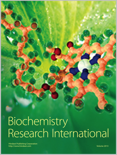
Proteome Science
Scope & Guideline
Exploring the Depths of Proteomic Research
Introduction
Aims and Scopes
- Proteomic Profiling of Diseases:
The journal extensively covers proteomic studies aimed at understanding the molecular underpinnings of diseases, including cancer, cardiovascular diseases, and neurodegenerative disorders. This includes identifying biomarkers and therapeutic targets. - Methodological Innovations in Proteomics:
A significant emphasis is placed on the development and application of novel proteomic techniques such as iTRAQ, TMT, and DIA-MS. These methodologies are critical for advancing quantitative proteomics and enhancing data accuracy. - Comparative Proteomics:
The journal frequently features comparative studies that analyze protein expression differences across various conditions, treatments, or disease states, providing insights into the biological significance of these alterations. - Integration of Multi-Omics Data:
There is a notable focus on integrative approaches that combine proteomics with other omics technologies (genomics, transcriptomics, metabolomics) to provide a holistic view of biological processes. - Environmental and Plant Proteomics:
Research on plant proteomics, especially regarding responses to environmental stressors, is a consistent theme, highlighting the ecological and agricultural implications of proteomic studies.
Trending and Emerging
- Spatial Proteomics:
Recent papers indicate a burgeoning interest in spatial proteomics, which explores protein localization within cells and tissues, particularly in the context of diseases. Understanding spatial dynamics is crucial for elucidating disease mechanisms. - Proteomics in Mental Health:
There is an increasing focus on the role of proteomics in understanding mental health conditions, such as depression. This trend is significant as it opens new avenues for biomarker discovery and therapeutic interventions. - Proteomics in Cancer Research:
A marked trend towards utilizing proteomics for cancer research is evident, with studies focusing on identifying biomarkers and therapeutic targets, as well as understanding tumor biology and resistance mechanisms. - Integrative Omics Approaches:
The integration of proteomics with transcriptomics and metabolomics is gaining traction, indicating a comprehensive approach to biological research that aims to understand complex biological systems. - Exosome and Microvesicle Proteomics:
Research on exosomes and microvesicles is emerging as a significant theme, as these entities are recognized for their role in intercellular communication and potential as biomarkers for various diseases.
Declining or Waning
- Basic Proteomic Techniques:
There appears to be a decrease in the publication of studies that solely focus on traditional proteomic techniques without incorporating advanced or hybrid methodologies, as researchers increasingly seek innovative approaches. - Animal Model Proteomics:
Research centered on animal models, particularly non-human species, has become less frequent, possibly as the focus shifts towards human clinical applications and translational research. - Single Protein Studies:
The trend of publishing studies that concentrate on the characterization of single proteins without broader biological context is declining, as studies increasingly aim for a systems biology approach. - Proteomic Studies in Less Common Diseases:
There is a noticeable reduction in studies related to less common or rare diseases, as the journal's focus shifts towards more prevalent health issues and their proteomic implications.
Similar Journals

COMPARATIVE BIOCHEMISTRY AND PHYSIOLOGY B-BIOCHEMISTRY & MOLECULAR BIOLOGY
Transforming Understanding of Biochemical ProcessesComparative Biochemistry and Physiology B: Biochemistry & Molecular Biology, published by Elsevier Science Inc, is a premier journal dedicated to the field of biochemistry and molecular biology with a specific focus on comparative analyses across various biological systems. Since its inception in 1971, the journal has made significant contributions to our understanding of the biochemical and physiological processes that differentiate organismal function across animal and aquatic life. The journal holds a commendable position in the academic community, evidenced by its 2023 rankings, which place it in the second quartile for Animal Science and Zoology and Aquatic Science, and the third quartile for both Biochemistry and Molecular Biology as well as Physiology. Researchers and students can access cutting-edge research through this highly respected publication, which continues to influence the future of biological sciences. While currently not an Open Access journal, its rigorous peer-review process ensures that only high-quality articles are disseminated, further solidifying its role as a critical resource for professionals and academics alike seeking to explore the intricate relationships between biochemical structures and physiological functions.

METABOLIC ENGINEERING
Advancing the Frontiers of Metabolic Pathway EngineeringMETABOLIC ENGINEERING, published by Academic Press Inc. Elsevier Science, is a renowned journal in the fields of Applied Microbiology, Biotechnology, and Bioengineering. With an impressive impact factor and ranking in the top quartile (Q1) across its specialized categories for 2023, this journal facilitates the dissemination of cutting-edge research focused on metabolic pathways and engineering methods that optimize biological systems for various applications. Since its inception in 1999, it has established itself as a critical resource for academics and industry professionals seeking innovative solutions to complex biosynthetic challenges. The journal invites original research, reviews, and technical notes that advance the understanding and utilization of metabolic processes; thus, it plays a pivotal role in bridging laboratory discoveries with practical applications. Although the journal does not offer open access, its high visibility and rigorous peer-review process ensure that it remains a vital source of knowledge and inspiration for researchers and students alike.

Current Proteomics
Exploring Innovations in Proteomic DiscoveriesCurrent Proteomics is a distinguished journal dedicated to the dynamic field of proteomics, offering researchers and professionals a platform to disseminate innovative findings and comprehensive reviews. Published by Bentham Science Publishers Ltd, this journal caters to a global audience and serves as an essential resource for students, academics, and industry experts interested in advances in biochemistry and molecular biology. With an ISSN of 1570-1646 and an E-ISSN of 1875-6247, the journal has established itself in various research categories, achieving a Q4 ranking in both Biochemistry and Molecular Biology as of 2023. While the impact factor and H-index data are not specified, its Scopus ranking reflects a competitive position in its fields, with percentiles in the 12th to 16th range. Although not an open-access journal, Current Proteomics is vital for fostering ongoing dialogue and collaboration in proteomic research, encouraging contributions that explore cutting-edge methodologies and applications. Researchers are invited to share their insights and contribute to this evolving discipline, thus enhancing the collective understanding of proteomics within the scientific community.

Proteomes, published by MDPI since 2013, is a notable open access journal that occupies a critical place in the realms of Biochemistry, Clinical Biochemistry, Molecular Biology, and Structural Biology. Based in Switzerland, this journal not only promotes the dissemination of high-quality research pertaining to protein structures and functions but also emphasizes interdisciplinary approaches that bridge various fields of biomedical science. With a Category Quartile ranking of Q2 across multiple pertinent categories in 2023, Proteomes boasts a competitive impact within the scientific community, evidenced by its robust Scopus rankings. Researchers, professionals, and students are invited to explore a wealth of pioneering studies and reviews that are made freely accessible, aligning with global trends in open scientific communication. Whether contributing original research or seeking to expand their knowledge, the journal serves as an invaluable resource for anyone engaged in the evolving landscape of proteomics.

MOLECULAR & CELLULAR PROTEOMICS
Exploring the intersection of biochemistry and analytical chemistry.MOLECULAR & CELLULAR PROTEOMICS, published by Elsevier, stands as a premier journal in the fields of Biochemistry, Analytical Chemistry, and Molecular Biology, with a distinguished Q1 ranking reflecting its high impact and contribution to the scientific community. Established in 2002, this journal has consistently provided a platform for the latest research in protein science, merging molecular biology with advanced analytical techniques. With impressive Scopus rankings—41st in Biochemistry and 16th in Analytical Chemistry—it caters to an audience of researchers, professionals, and students eager to explore cutting-edge developments in proteomics. Although currently not designated as open access, the journal aims to foster knowledge dissemination through accessible research content. As it continues to evolve until 2024, MOLECULAR & CELLULAR PROTEOMICS is essential for anyone passionately engaged in the ever-expanding field of proteomics.

GENETICS AND MOLECULAR BIOLOGY
Transforming research into impactful discoveries.GENETICS AND MOLECULAR BIOLOGY, published by the SOC BRASIL GENETICA, is a prominent journal dedicated to the advancement of knowledge in the fields of genetics and molecular biology. Since its inception in 1998, this Open Access journal has served as a vital platform for researchers, professionals, and students to disseminate their findings and engage with the latest innovations and discoveries. With an impact factor that reflects its growing influence, GENETICS AND MOLECULAR BIOLOGY ranks in the Q3 category for both genetics and molecular biology as of 2023, indicating its position within the academic community. The journal is indexed in Scopus, highlighting its commitment to maintaining rigorous peer-review standards while providing wide-reaching access to quality research. Operating out of Ribeirão Preto, Brazil, it fosters a collaborative environment for academic discourse and research development not only in Brazil but also globally. The journal encourages submissions that explore a wide range of topics in genetics and molecular biology, making it an essential resource for anyone involved in these dynamic fields.

Molecular Omics
Advancing Knowledge in Biochemistry and GeneticsMolecular Omics is a premier, peer-reviewed journal published by the Royal Society of Chemistry, focusing on the interdisciplinary field of molecular biology with significant implications for biochemistry and genetics. With an E-ISSN of 2515-4184, this journal has been dedicated to disseminating high-quality research since its inception in 2018, maintaining an impressive trajectory in academic contributions until 2024. Currently, it holds a Q2 quartile ranking in both Biochemistry and Genetics, alongside a Q3 ranking in Molecular Biology for 2023, highlighting its relevance and influence in these domains. The journal is accessible as an open access publication, promoting the widespread dissemination of groundbreaking research. As part of a vibrant academic community, Molecular Omics aims to bridge fundamental and applied science, appealing to researchers, professionals, and students eager to expand their knowledge on molecular mechanisms and technologies that shape the future of biological research.

PROTEOMICS
Shaping the future of life sciences through proteomic research.PROTEOMICS is a leading journal focused on the rapidly evolving field of proteomics, published by WILEY in Germany. With a solid reputation established since its inception in 2001, it has continually contributed to the understanding of protein functions and interactions within biological systems. As part of its commitment to academic excellence, PROTEOMICS is ranked in the second quartile for both Biochemistry and Molecular Biology categories (2023), reflecting its significant influence in advancing research in these areas. Although it does not currently provide open access options, it remains a vital resource for researchers, professionals, and students keen to explore innovative methodologies and findings in proteomic research. By publishing groundbreaking studies that bridge theoretical knowledge with practical applications, PROTEOMICS plays a crucial role in enhancing our understanding of molecular processes and driving forward advancements in the life sciences.

Precision Clinical Medicine
Empowering personalized medicine for every patient.Precision Clinical Medicine, published by Oxford University Press, is an esteemed open-access journal that has been at the forefront of clinical research since its inception in 2018. With an ISSN of 2096-5303, this journal specializes in the rapidly evolving field of precision medicine, which aims to tailor healthcare to individual patient characteristics, needs, and preferences. As a testament to its influence, Precision Clinical Medicine holds a remarkable rank of #34 out of 636 in the General Medicine category on Scopus, placing it within the 94th percentile of its field and earning a prestigious Q1 rating in 2023. Based in the United Kingdom, the journal not only provides open access content, ensuring that groundbreaking research is widely disseminated, but also serves as a crucial platform for innovations and discussions that shape modern medical practices. Researchers, professionals, and students alike will find valuable insights and influential studies that drive the future of personalized healthcare within its pages.

Biochemistry Research International
Empowering the future of biochemistry research worldwide.Biochemistry Research International is a prominent and dynamic journal published by Hindawi Ltd, dedicated to advancing knowledge in the field of biochemistry. With its Open Access model established since 2010, the journal provides unrestricted access to high-quality research, thereby fostering global communication among researchers and professionals. Operating out of the United States, Biochemistry Research International serves as a vital platform for disseminating cutting-edge findings in biochemistry and molecular biology, holding a respectable Q2 ranking in its category as of 2023. The journal's scope encompasses a wide array of topics including but not limited to biochemical processes, genetic engineering, and molecular interactions, making it an essential resource for students and seasoned researchers alike. With an impact factor reflective of its significance in the academic community, Biochemistry Research International continues to play an integral role in shaping the future of biochemistry research.